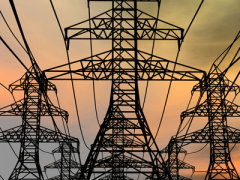PBL contributes to European study on Transitions to a sustainable mobility system
Which changes are needed to move towards a more sustainable mobility system in Europe? A new report by the European Environment Agency (EEA) assesses the progress that European Union Member States are making to improve the environmental performance of transport in line with related EU policy targets. The report also looks at the big changes underway in the sector, from emerging technologies such as electric and driverless cars, to recent innovations that are becoming increasingly popular, such as shared or on-demand mobility services for commuters. PBL Netherlands Environmental Assessment Agency was one of the contributors to this study.
Far-reaching changes are needed to achieve decarbonisation
So what changes can society make to our mobility system to significantly improve its sustainability? The report stresses that while technological developments will continue to largely determine the future environmental performance of the transport sector, many past beneficial technological advances have historically been offset by the ever increasing demand for transport. Meeting decarbonisation and other environmental goals for the sector requires not only incremental changes such as improvements to the fuel efficiency of road vehicles, planes and ships, but also more far reaching changes, such as the widespread introduction of electric vehicles and changes to lifestyles and habits which greatly influence the way that society uses transport.
Identifying barriers and lock-ins
Looking to the future, the report identifies the scale of change required, in terms of transport’s environmental performance, in order to meet the EU’s long-term decarbonisation targets for 2050. It also looks at the strong links and interdependencies between the transport system and the food, land use and tourism sectors.
The contribution of PBL staff members Hans Hilbers and Hans Nijland focused on transitions to a more sustainable transport system: what are the various barriers and ‘lock-ins’ that can hold up or delay the shift to a more sustainable mobility system? One clear example of a ‘lock-in’ is society’s continued dependence on the fossil-fuel powered internal combustion engine, coupled with continued investments in traditional road transport infrastructure, which can hamper efforts to shift to more sustainable modes of transport.




